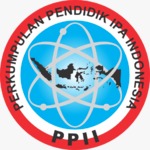Separation of Variables Method in Solving Partial Differential Equations and Investigating the Relationship between Gravitational Field Tensor and Energy-Momentum Tensor in Einstein's Theory of Gravity
DOI:
https://doi.org/10.29408/kpj.v7i2.20921Keywords:
Partial Differential Equations (PDEs), Gravitational Fields, Spacetime, Green's Function, Electromagnetic FieldsAbstract
This research delves into the study of partial differential equations (PDEs) and gravitational fields in spacetime. It focuses on solving PDEs using the Separation of Variables method and explores the relationship between the gravitational field tensor and the energy-momentum tensor, leading to the final equation for the gravitational field tensor. The research also investigates Einstein's theory of gravity and the energy-momentum tensor integral, providing the general solution for the gravitational potential and its implications. Additionally, the mean integration of the gravitational wave tensor is analyzed, yielding an expression for the tensor strain of gravitational waves over an infinitely long period. The components of the gravitational wave tensor and their effect on gravitational sources are examined. Furthermore, the propagation of electromagnetic fields in spacetime is studied using the Retarded Green's Function. The primary objectives of this research are to understand and explore mathematical techniques for solving PDEs and analyzing gravitational fields and their interactions in spacetime. The integration of multiple theoretical concepts related to PDEs, gravitational fields, and electromagnetic fields enhances our understanding of fundamental physics principles. This contributes to the advancement of theoretical physics and opens avenues for potential practical applications, such as gravitational wave detection and electromagnetic field propagation in complex media. In conclusion, this research provides valuable insights into fundamental physics principles and fosters a deeper understanding of their interconnections and implicationsReferences
M. Misbah, “Persamaan Differensial Matematika Fisika,” 2022.
E. G. Haug, “Demonstration that Newtonian gravity moves at the speed of light and not instantaneously (infinite speed) as thought!,” Journal of Physics Communications, vol. 5, no. 2, p. 025005, 2021.
Budiman Nasution, Ruben Cornelius Siagian, Arip Nurahman, and Lulut Alfaris, “EXPLORING THE INTERCONNECTEDNESS OF COSMOLOGICAL PARAMETERS AND OBSERVATIONS: INSIGHTS INTO THE PROPERTIES AND EVOLUTION OF THE UNIVERSE,” SPEKTRA, vol. 8, no. 1, Apr. 2023, doi: 10.21009/SPEKTRA.081.03.
R. C. Siagian, L. Alfaris, A. Nurahman, and E. P. Sumarto, “TERMODINAMIKA LUBANG HITAM: HUKUM PERTAMA DAN KEDUA SERTA PERSAMAAN ENTROPI,” Jurnal Kumparan Fisika, vol. 6, no. 1, pp. 1–10, May 2023, doi: 10.33369/jkf.6.1.1-10.
R. C. Siagian, L. Alfaris, A. C. Muhammad, U. I. Nyuswantoro, and G. T. Rancak, “The Orbital Properties of Black Holes: Exploring the Relationship between Orbital Velocity and Distance,” Journal of Physics and Its Applications, vol. 5, no. 2, pp. 35–42, Jun. 2023, doi: 10.14710/jpa.v5i2.17860.
P. Kornreich, “Space-Time Curvature Mode Quanta,” Journal of Modern Physics, vol. 11, no. 12, p. 1977, 2020.
L. Alfaris, R. C. Siagian, and E. P. Sumarto, “Study Review of the Speed of Light in Space-Time for STEM Student,” Jurnal Penelitian Pendidikan IPA, vol. 9, no. 2, pp. 509–519, 2023.
R. C. Siagian, L. Alfaris, and G. H. D. Sinaga, “Review for Understanding Dark Matter in The Universe as Negative Energy,” presented at the Proceeding International Conference on Religion, Science and Education, 2023, pp. 679–685.
M. MISBAH, “Teori Relativitas,” 2023.
B. Nasution et al., “Physics Visualization of Schwarzschild Black Hole through Graphic Representation of the Regge-Wheeler Equation using R-Studio Approach,” Sainmatika: Jurnal Ilmiah Matematika dan Ilmu Pengetahuan Alam, vol. 20, no. 1, pp. 8–24, 2023.
R. C. Siagian, “Filsafat Fisika dalam konteks Teori Relativitas,” philosophy, vol. 1, p. 20.
C. Molnar et al., “General pitfalls of model-agnostic interpretation methods for machine learning models,” presented at the International Workshop on Extending Explainable AI Beyond Deep Models and Classifiers, Springer, 2020, pp. 39–68.
B. Nasution, L. Alfaris, and R. C. Siagian, “Basic Mechanics of Lagrange and Hamilton as Reference for STEM Students,” Jurnal Penelitian Pendidikan IPA, vol. 9, no. 2, pp. 898–905, 2023.
L. A. Florio, “Importance of Understanding the Physical System in Selecting Separation of Variables Based Methods to Solve the Heat Conduction Partial Differential Equation,” The Mathematics Enthusiast, vol. 21, no. 1, pp. 301–314, 2024.
Y. Wen, T. Chaolu, and X. Wang, “Solving the initial value problem of ordinary differential equations by Lie group based neural network method,” Plos one, vol. 17, no. 4, p. e0265992, 2022.
T. Harko, N. Myrzakulov, R. Myrzakulov, and S. Shahidi, “Non-minimal geometry–matter couplings in Weyl–Cartan space–times: f (R, T, Q, Tm) gravity,” Physics of the Dark Universe, vol. 34, p. 100886, 2021.
H. Abedi, F. Bajardi, and S. Capozziello, “Linearized field equations and extra force in f (R, T (n)) extended gravity,” International Journal of Modern Physics D, vol. 31, no. 11, p. 2240015, 2022.
R. C. Siagian, P. Pribadi, G. H. D. Sinaga, A. Nurahman, and B. Nasution, “Statistical Data Retrieval Technique in Astronomy Computational Physics,” JATISI (Jurnal Teknik Informatika dan Sistem Informasi), vol. 10, no. 1, 2023.
J. M. Pretel, S. E. Jorás, R. R. Reis, and J. D. Arbañil, “Neutron stars in f (R, T) gravity with conserved energy-momentum tensor: Hydrostatic equilibrium and asteroseismology,” Journal of Cosmology and Astroparticle Physics, vol. 2021, no. 08, p. 055, 2021.
T. P. Stefański and J. Gulgowski, “Fundamental properties of solutions to fractional-order Maxwell’s equations,” Journal of Electromagnetic Waves and Applications, vol. 34, no. 15, pp. 1955–1976, 2020.
H.-Y. Wang, “The mathematical physical equations satisfied by retarded and advanced Green’s functions,” Physics Essays, vol. 35, no. 4, pp. 380–391, 2022.









